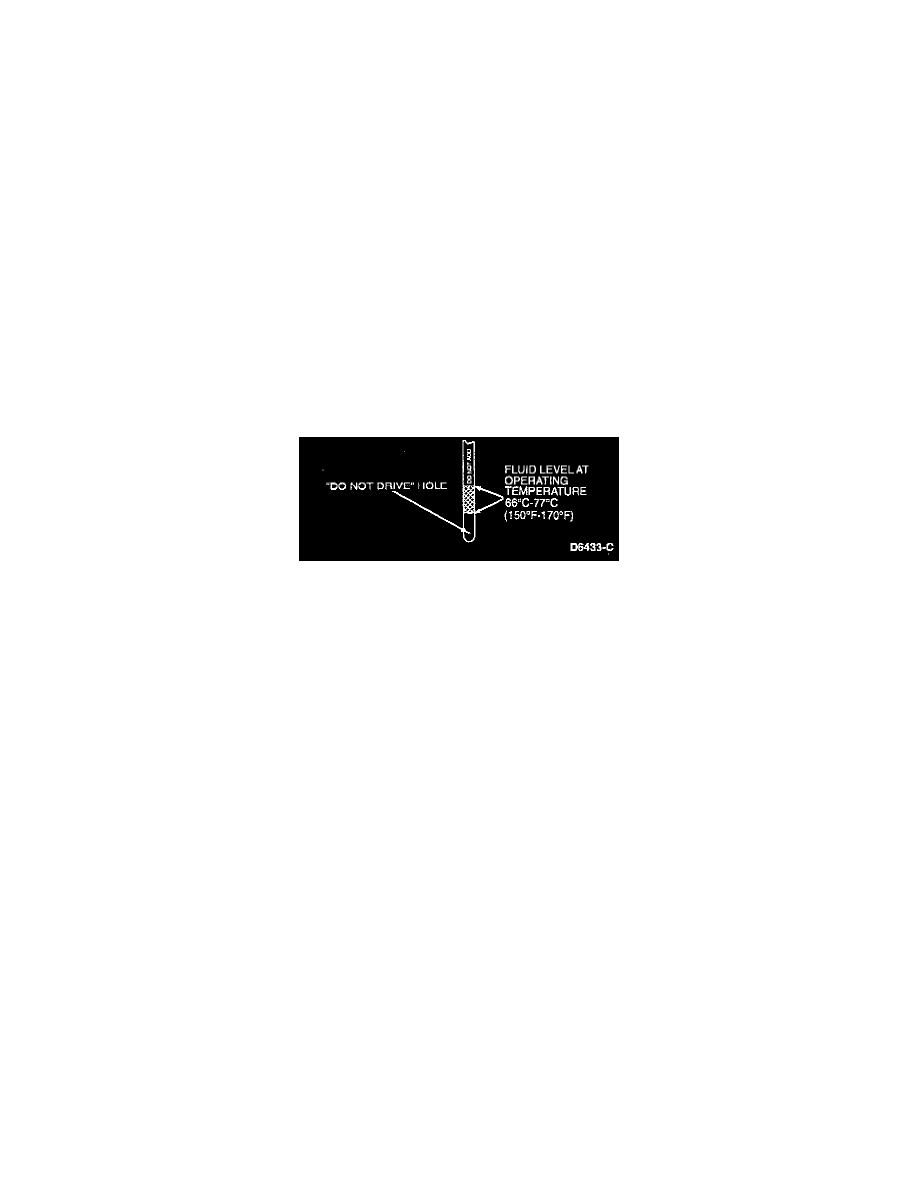Sable V6-183 3.0L DOHC VIN S MFI (1997)

Fluid - A/T: Testing and Inspection
Fluid Level Check
NOTE: If the vehicle has been operating for an extended period at high speeds or in city traffic during hot weather or pulling a trailer, the engine should
be turned off for about 30 minutes to allow the fluid to cool before checking.
DESCRIPTION
^
Under normal circumstances, you need to check the fluid level at about 48,000 kilometers (30,000 miles) or 34,000 kilometers (21,000 miles)
severe duty. However, if the transaxle is not working properly, for instance the transaxle may slip or shift slowly or you may notice some sign of
fluid leakage, the fluid level should be checked.
^
It is preferable to check the transmission fluid level at normal operating temperature after approximately 32 kilometers (20 miles) of driving.
However, if necessary, you can check the fluid level without having to drive 32 kilometers (20 miles) to obtain normal operating temperature if
the outside temperature is above 10°C (50°F).
PROCEDURE
^
With the vehicle on a level surface, start the engine and move the transaxle range selector lever through all of the gear ranges, allowing sufficient
time for each position to engage. Securely engage the transaxle range selector lever in PARK position, fully set the parking brake and leave the
engine running.
^
Wipe off the fluid level indicator cap, pull the fluid level indicator out and wipe clean. Put the fluid level indicator back into the filler tube and
make sure it is seated properly. Pull out the fluid level indicator and read the fluid level.
CAUTION: Vehicle should not be driven if the fluid level is below the bottom hole on the fluid level indicator and the outside temperature is
above 10°C (50°F).
^
When checking fluid at normal operating temperature, the fluid level should be within the crosshatched area or "HOT" marked area on the fluid
level indicator. When the vehicle has not been driven, and the outside temperature is above 10°C (50°F), the fluid level should be between the
hole and the lower edge of the crosshatched area on the fluid level indicator.
HIGH OR LOW FLUID LEVEL
^
A fluid level that is too high may cause the fluid to become aerated due to the churning action of the rotating parts of the transaxle. Aerated fluid
will cause erratic line pressure, which may result in harsh/soft shifts or engagements, damage to the clutch material, improper torque converter
operation and fluid coming out of the vent. If fluid level is high, excess fluid MUST be removed.
^
A fluid level that is too low will affect transaxle operation, such as; slipping, slow engagements, damage to internal hardware. Low levels may also
indicate that a leak is present in the fluid system. If fluid level was low, add fluid.
CAUTION: Use of improper fluid could result in transaxle malfunction or failure.
